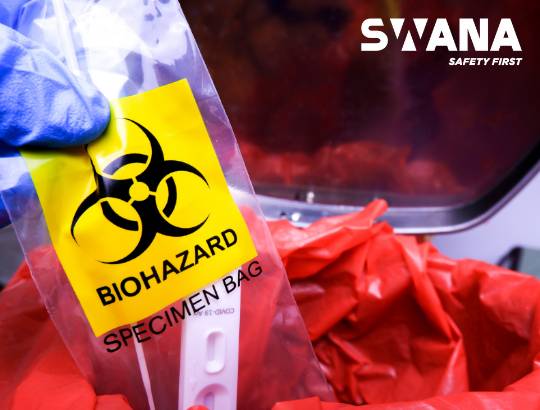Safety First: Handling Biohazardous Waste
March 5, 2024

Working in the solid waste industry comes with its own set of challenges, especially when it comes to handling biohazardous waste. Biohazardous waste poses unique risks that require careful attention and adherence to safety protocols.
Whether you're a seasoned professional or new to the field, here are six safety tips to keep in mind when dealing with biohazardous waste:
- Proper Personal Protective Equipment (PPE): Always wear appropriate personal protective equipment when handling biohazardous waste. This includes gloves, goggles or a face shield, and a protective suit. PPE acts as a barrier between you and potentially harmful pathogens, reducing the risk of exposure.
- Safe Handling and Transportation: Handle biohazardous waste with care to prevent spills or leaks. Use sturdy, leak-proof containers that are properly labeled and sealed to transport waste. Ensure that containers are not overfilled to avoid accidents during transportation.
- Training and Education: Stay informed about the types of biohazardous waste you may encounter and the associated risks. Receive proper training on handling, storage, and disposal procedures. Regularly refresh your knowledge and skills to stay up to date with safety protocols and regulations.
- Proper Disposal Procedures: Follow established protocols for the safe disposal of biohazardous waste. Use designated disposal areas or facilities equipped to handle such waste. Never dispose of biohazardous waste in regular trash bins or down drains, as this can pose a risk to public health and the environment.
- Prevent Cross-Contamination: Take precautions to prevent cross-contamination between biohazardous waste and other materials. Use separate containers and equipment for handling biohazardous waste to avoid spreading pathogens. Clean and disinfect work surfaces and tools regularly to minimize the risk of contamination.
- Emergency Preparedness: Be prepared to respond to emergencies involving biohazardous waste, such as spills or accidents. Have a detailed emergency response plan in place, including procedures for containment, cleanup, and notification of appropriate authorities. Conduct regular drills to ensure that all personnel are familiar with their roles and responsibilities in an emergency.
By following these safety tips, workers in the solid waste industry can minimize the risks associated with handling biohazardous waste and help protect both themselves and the community from potential harm. Remember, safety should always be a top priority when dealing with hazardous materials.







Leave a comment